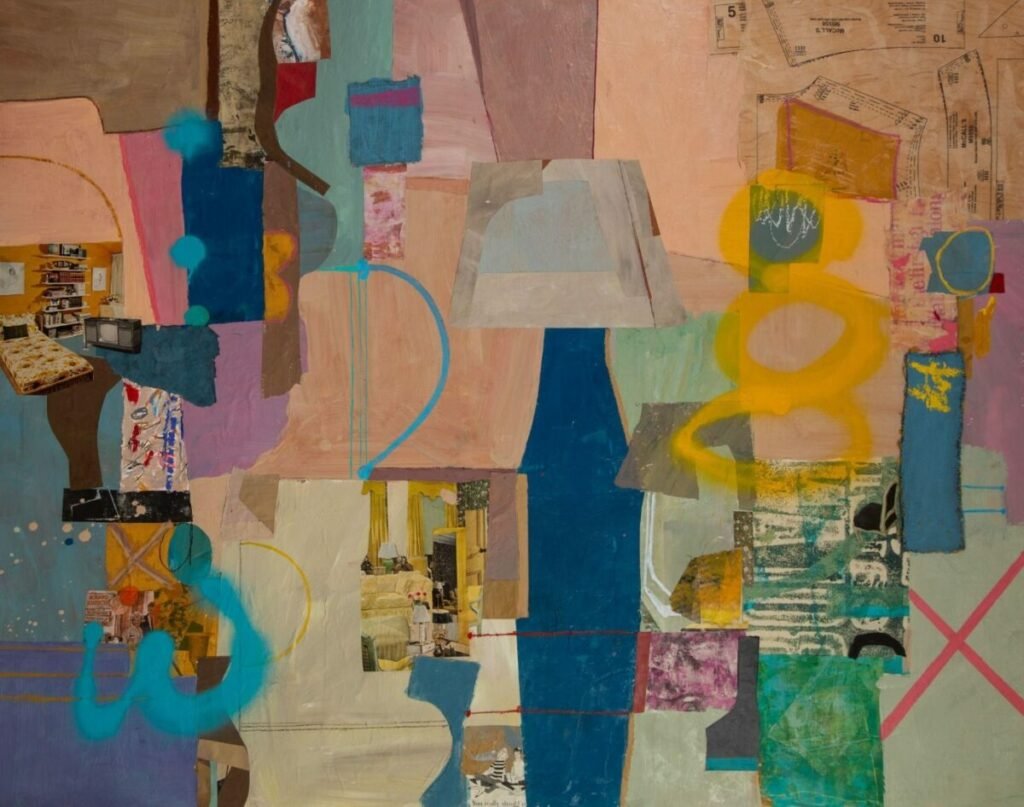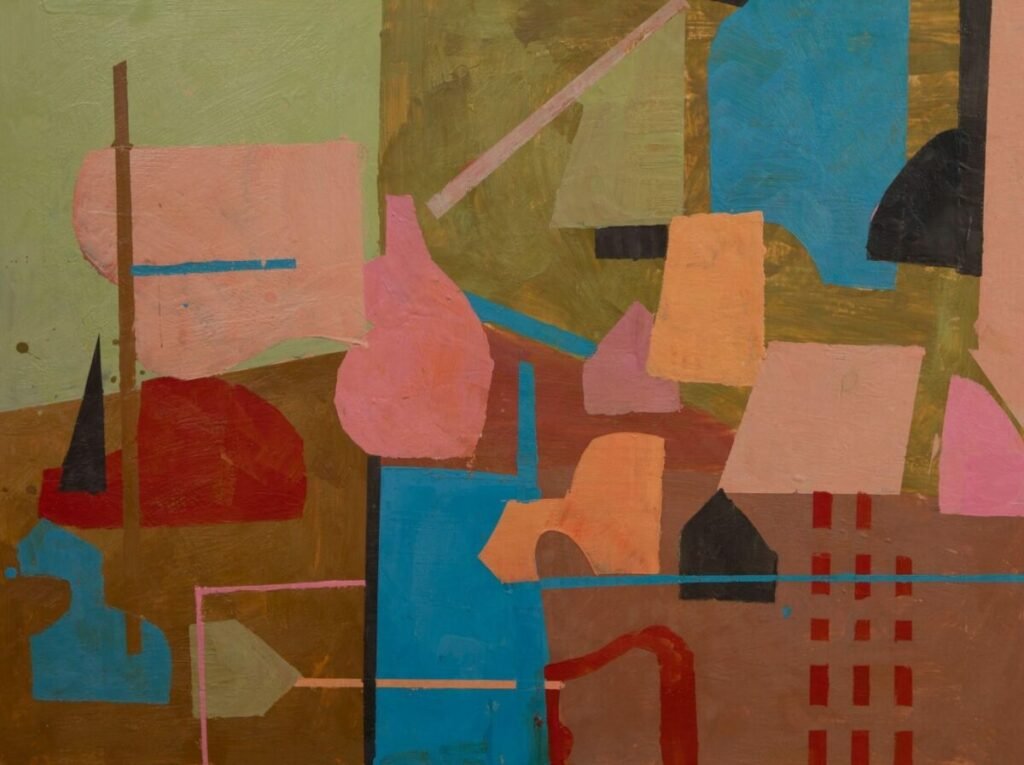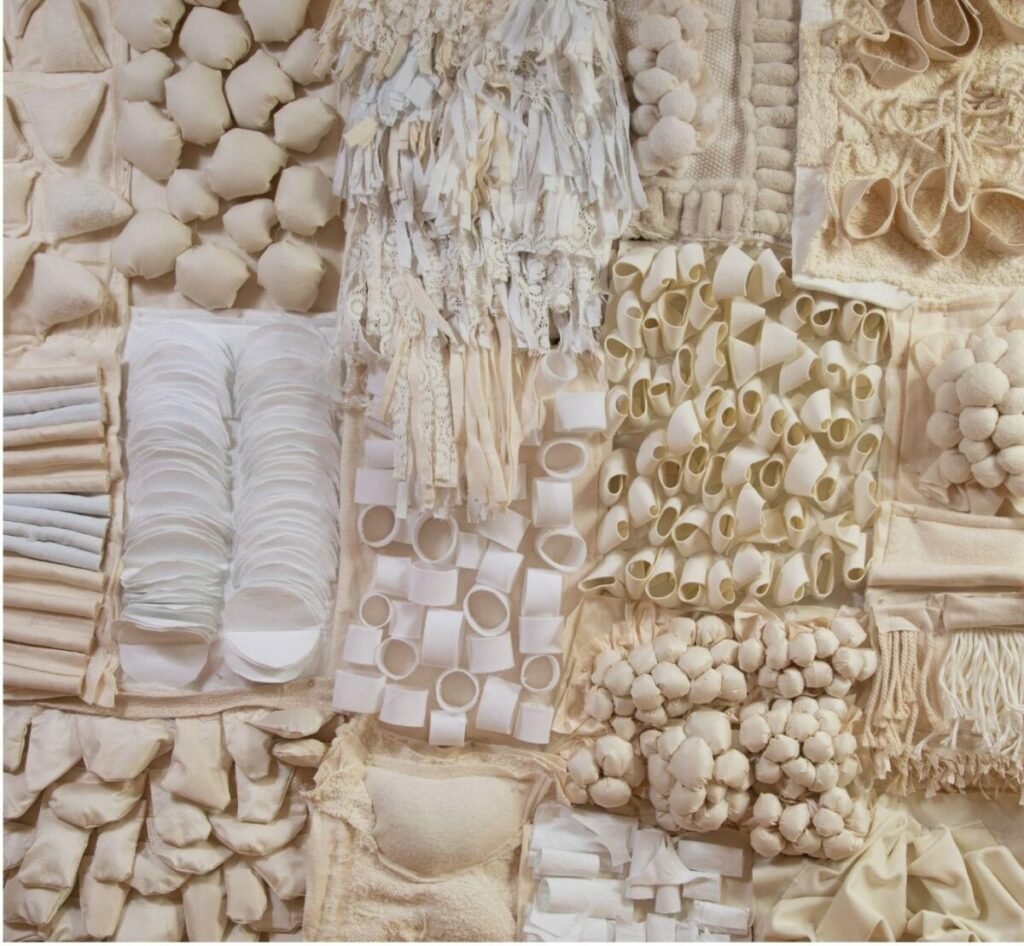
Streetlight: When and how were you introduced to art?
Frankie Slaughter: When I was growing up, my mother, a modern dancer, art historian and arts enthusiast, and my father, a criminal trial lawyer and amateur magician, exposed my sisters and me to the arts in every form, practically on a daily basis—dance, art, magic, theatre. I engaged in many of these activities, such as painting, drawing, ceramics, tap, ballet, jazz, puppet making and set design.
Streetlight: How did your work evolve?
Slaughter: I started out with ceramics. I’ve always been interested in the materiality of the medium I’m working with—clay, paint, encaustic, textile, paper, beads—exploring and stretching what might be considered the limits of the materials. Over time, I’ve gained more and more confidence in my use of the various media; I think the work in the Quirk exhibition reflects this evolution.

Streetlight: How did living in Hong Kong influence your work?
Slaughter: I lived in Hong Kong twice, for a total of nearly twelve years. When I first lived there in the ’90s, I met and worked alongside a group of Chinese ceramic artists who were making innovative, contemporary objects. This was an important experience where we shared a kind of mutual language. At that time, I was also making found object sculptures from materials and remnants I would collect on walks and in the village where we lived. Later, I began to focus on textiles, which was a direct result of my exposure to the patterns and embellishments around me and from my travels in neighboring countries. Like other influential events and periods of my life, my time in Asia could be considered integral to who I am. The continued influence of that time on my art is not as identifiable as it might have been in years past, but it is surely part of the subtext running through my work.

Streetlight: How would you define your work?
Slaughter: I’m a mixed media artist who works with a variety of materials including paint, encaustic, textile, paper, and porcelain. A unifying way to view my current work is through the lens of collage and its properties: layering and overlapping, an intersection of line and form, the addition and subtraction of tangible material, patterning and repetition, an interaction with what came before and what comes after, in other words, an engagement with the history of the making, and the role of chance and discovery. Each medium—whether paint, clay or textile—naturally presents a creative challenge to my imagination.

Streetlight: What artists inspire or influence your work?
Slaughter: I am drawn to artists who focus on materiality, color, contrast, and layering, who use a variety of line and mark-making, artists Robert Rauschenberg and Helen Frankenthaler among them.

Streetlight: Please describe your process.
Slaughter: An intuitive exploration of materiality is at the core of my work whether that material is paint (color), encaustic, textile or clay. Ultimately, I’m searching for alignment of the medium at hand with my visual language.
My process is intuitive and fluid. With painting, I start with a palette and I apply the paint and/or encaustic onto my panel without conscious thought or direction. Then, I might edit where and which color groupings I feel are balanced in certain areas of the work. Next, I take time to read the work and instinctively I begin making marks and adjustments; sometimes these are lines to define more color in some areas with a variety of my tools – oil sticks, pastels, pencil, carbon paper, charcoal. My initial patches of color become more intentional with each mark and alteration.

Slaughter: Stepping back and continuing to read the work, I add or subtract elements. The painting tells me what and when to tweak, add, alter, decrease or increase the boldness or quiet of a section.
I have learned to trust my instincts as to when the work is complete and balanced and I am satisfied it captures the experience I discovered in the process—an experience mysterious to me at the start of the painting.


Streetlight: How would you characterize your new show at the Quirk Gallery?
Slaughter: My Quirk show is my most abstract exhibition to date, despite some references to still life. In addition to painting and ceramic, I explore textile in a new way in this exhibit, with a purely abstract approach; formally speaking, this piece is organized in a grid where each “square” is a riff on a particular three-dimensional element. I would characterize the show as intuitive, immediate, dynamic, enlivened, gestural, layered, large-scale and bold.


Streetlight: Please describe the challenges in your textile installation.
Slaughter: A prominent piece in the exhibit, is a large textile work, a monochromatic “grid” in off-whites, that could be considered a three-dimensional interplay of the same family of shape, line and texture that appears in my paintings. Because I work instinctively, in addition to being an exploration of tactility (where our sense of touch prevails over our visual sense), perhaps the textile could also be interpreted as a variation of languages (each individual square representing a language) that culminates in mutually understood conversation. This large textile work led me to then make small-scale ceramic “squares” that mimic fabric, the pursuit being to render a “hard” material “soft.” These small ceramic works are also on display in the exhibition.

Streetlight: What is your artist’s statement about your work?
Slaughter: My work is about how form finds surface and then shifts, about the now that lives in every application of paint, wax, clay, and in the sheer presence of color.
The present keeps stacking—urgently, intuitively, playfully, boldly—on top of itself to become an intersection of texture, line, pattern and light.

Slaughter: My work is not about closure or tidy packages; rather, it braves the unrefined chaos where the only language is this one: a visual expression which urges the viewer to stay again and again in the imperfect but beautiful moment.
Frankie Slaughter’s new work will be exhibited at the Quirk Gallery in Charlottesville, Va., with the opening reception on January 25th from 5 to 8 p.m. The exhibit will run until March 31st. There will be an Artist’s Talk at 6 p.m., Friday, March 1st. Another Artist Talk is at 6:30 p.m. March 5th at the Commonhouse in Charlottesville, Va. for members and their guest and non-members for a fee.

Share this post with your friends.


What does your concept of quirk art have in common with, for example, the quirk art of Wes Anderson’s films?